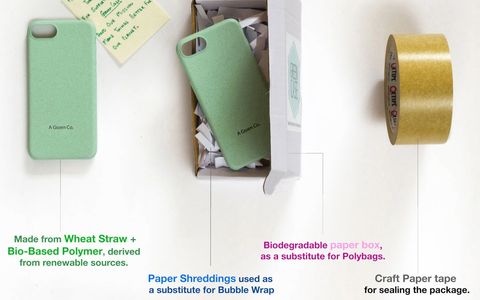Living a clean, Eco-Friendly life in today’s world can be a serious challenge, let alone going zero waste like our favorite Instagram influencers. But, that doesn’t mean that you cannot enhance the environmental friendliness of your lifestyle or fight global warming from your home. Here are 9 easy and surefire ways to reduce your carbon footprint and kick Climate Change in it’s gut:
1. Buy Local Ingredients

Buying food produced across the country or globe, packaged by large corporations in their factories several thousand kilometers away from the fields or your house, means that the food has had to travel severely long distances before it reached you. This distance between the fields used for production of the food, and the supermarket near your house, is what the environmentalists of today call “food miles”.
“Food Miles” lead to carbon emissions from running the transportation trucks, railways, and ships, along with cold storage warehouses, refrigerators, and factories where it is processed.
Buying local on the other hand, can make up for carbon emissions throughout the production process of food products, because fewer food miles = eco-friendly. It saves on carbon emissions, requiring fewer travel miles by transport vehicles in order to get the food from the farm to your table.
Though the actual carbon savings of eating local may not be jaw-dropping, buying local has plenty of other positive impacts that make it a worthwhile practice. Buying local supports local businesses and the local economy, supports the preservation of land and natural resources, and ensures you are getting the freshest ingredients available.
2. Install Solar Panels

Clean energy is still believed to be a thing of the distant future, an unrealistic idea that won’t provide a practical solution for centuries to come. Don’t believe the hype: clean energy is already doing wonders for humanity, and if you want to, there are plenty of resources to get you started producing your own, emissions-free electricity.
Look towards Solar panels. They are a relatively easy and accessible clean energy source that can be conveniently installed at your home. In most parts of India, Solar panels are an exceptionally efficient method of producing energy, and a single residential solar panel system can power an entire home at 80% lower rates of carbon emissions than fossil fuels.
They are not very expensive either, and the savings in electricity costs pay up for the initial investment within a few years, and with proper care, a solar panel will last you a long time. With the government giving subsidies to encourage more people to adopt this technology, there cannot be a sweeter deal. Checkout this calculator provided by the Ministry of New and Renewable Energy, India, which can tell you in a minute how much you can save financially and for the environment.
3. Learn What Can and Cannot Be Recycled

We might not know yet, but even with the best intentions in our minds, we may be accidentally contributing excessively to global waste and pollution, and unfortunately, one of the top sources of accidental waste comes from our home garbage bins. Recycling regulations vary everywhere, but one thing stays the same: some people simply never learn the rules.
While some countries like Japan and Germany have extremely strict recycling policies with enforced penalties for wrongfully placed materials, countries like the India are completely laid back when it comes to countrywide recycling. With every state and city following their own specific recycling policies, it can be hard to learn what can and cannot be tossed in which bin, if there is any bin to be found anywhere in the first place.
With Swachh Bharat Abhiyaan launched by the government, we have started to clean the country, but do enough people care about where the waste ultimately goes?
Every state has their own policies, and so you must check with local sanitation authorities to learn more about the specifics of your area, there are a few items that most people are shocked to learn CANNOT be recycled:
- Pizza boxes
- Coffee cups
- Paper plates
- Plastic phone cases
- Plastic toothbrushes
- Plastic wrap
- Plastic straws
- Plastic bags
Here is a guide to the Garbage bin color coding, to help you remember where to put the plastic cup from your takeaway coffee (BTW please avoid takeaway cups, if possible) the next time.
4. Compost your home waste and Your Phone Case

Ever thought about what happens to the waste that you toss into your singular garbage bin at home? 99% of it goes into the nearest landfill. Landfills are large areas of land designated for the dumping of consumer and industrial waste. As layers of waste are added to the landfill, layers of dirt are added to eventually fully bury and cover the mountains of garbage. India is home to some of the largest landfill mountains in the world, one of which is Ghazipur landfill in Delhi, which even has its own landslides killing and entrapping people, like actual mountains. Here is a video of the monstrosity:
While some of the garbage sent to landfills eventually disappears into the soil, the majority will take hundreds or thousands of years to begin the process of decay. Plastic items, like plastic phone cases, will never fully disappear, spending centuries slowly turning to microplastics and leaching chemicals and toxins into the surrounding soil and water.
At A Green Co., we have made it our mission to do our part to reduce plastic waste, which is why we offer a fully compostable phone case that can be composted along with your food scraps to reduce your household waste. Rather than sending food scraps and unwanted phone cases to the landfill, make a small compost pile in your yard and create your own nutrient-rich compost for your garden!
5. Eat Vegetarian

Remember how we mentioned that buying local is an amazing place to start reducing your carbon footprint? Here’s where the real savings happen. While reducing your food miles is a decent way to reduce your carbon footprint, opting to eat vegetarian is actually a far more impactful way of saving on emissions when you shop for groceries. Looks like half of India is already doing the right thing (Yayy :D), by the virtue of being born into a vegetarian family.
The meat industry is responsible for more than half of all greenhouse gas emissions produced by the food industry, while vegetables, fruits, and grains make up less than 6% collectively. By choosing to eat vegetarian even just once a week, you can significantly reduce your personal carbon footprint, and impact how the meat industry operates as a whole.
And of course, along with the vegetarianism comes the satisfaction that millions of animals are not being tortured to reproduce and grow in uninhabitable conditions, just for the sake of their meat.
Eating vegetarian is also a great way to encourage friends and family to engage in topics concerning the environment and their personal impact on the planet since no conversation is better than one had over a delicious meal. Here’s a link to one of our favorite vegan café, for you to binge over the next weekend.
6. Ride Your Bike or Walk

It is common knowledge that cars, trucks, and buses burn fossil fuel, and contribute significantly to greenhouse gas emissions and the degradation of the ozone layer. Despite the broad spread of this knowledge regarding cars and carbon emissions, almost every city dweller owns or dreams to own cars and utilize them even for short-distance errands.
A big step to reduce your personal carbon footprint, can be made by a small switch to walking or riding a bicycle for your next short trip to the grocer’s or to your friend’s house.
Need to pick up a jug of orange juice from the store down the street? Grab a comfortable pair of shoes, toss on your earbuds, and enjoy your favorite album or podcast on your walk to the store. Going a little further than you think is walkable? Consider riding your bike rather than going right back to the car.
You know what happens when you walk there? You can make use of local businesses and entertainment by walking whenever the mood to go out strikes.
7. Buy Secondhand Clothes

We are not against fashion. In fact, it is a necessity of life. However, fast fashion brands like Zara, HM, Mango, and several others have wreaked complete havoc on Mother Nature’s balance.
More than 40 million tons of textile waste is generated every year. Scraps, industrial runoff, defective items, and last season’s jeans are unceremoniously tossed into landfills, abandoned in favor of new materials, new designs, and next year’s trends.
A majority of discarded clothing is only lightly worn, usually in perfectly good or near perfect condition despite being tossed in the trash. This endless fashion loop results in a lot of high-quality fabric going to waste, and a ton of resources being used every year to produce new fabric and clothing that won’t last 12 months on the shelves or in consumer closets. The demand for new clothing is so high that the fashion industry now accounts for 10% of annual global carbon emissions.
Fashion labels even practice throwing their own leftover clothes in an unused condition into landfills, or setting them up on fire, so as to avoid selling at lower costs.
To reduce your personal carbon footprint and avoid falling into the endless fashion loop, consider donating your lightly used and unwanted clothes to local charity organizations, second-hand stores, and recycling centers. Your clothes can likely be worn many more times, and donating them will ensure they live out their full lifespan.
8. Say ‘No’ to Single-Use Plastic

Though plastic, in general, poses a threat to the safety of our planet and its environment, single-use plastic items make up almost 80% of global plastic waste and are seemingly impossible to avoid. Everywhere you look there are single-use plastic products, whether you are buying groceries, treating yourself to coffee, visiting the dentist, or preparing for your child’s birthday party, single-use plastic can seem inescapable.
Single-use plastic items are items that are not intended for reuse and are purposefully made to be relatively fragile and easily damaged. Coffee cups, plastic bags, plastic straws, plastic utensils, and many other single-use plastic items are quick to succumb to regular wear, meaning you couldn’t reuse them if you wanted to!
Unfortunately, the majority of these single-use plastic items are also non-recyclable, either made from mixed materials or made too light to be processed by most recycling facilities. As a result, all single-use plastic items eventually find their way either to landfills or are left to pollute natural ecosystems like lakes, rivers, oceans, parks, and so on. Readily mistaken for food by fish, seabirds, and other marine creatures, plastic has begun to pose an increasingly serious threat to the health and safety of most marine species.
Though it can be tempting to succumb to the convenience of single-use plastic items, simply saying ‘no’ to single-use plastic and opting for reusable options instead can make a world of difference. Reusable eco-friendly alternatives exist for virtually every kind of single-use plastic item, from reusable coffee mugs and straws to reusable grocery bags and water bottles. Besides being more environmentally friendly, reusable options are also often more economic; after an initial investment, you’ve got a reusable product for life!
9. Commit to a Green Life
With more than 8 million tons of plastic entering our oceans every year, there is no better time than the present to commit to reducing plastic pollution and protecting our oceans. As in landfills, plastic items littered or swept into the ocean spend hundreds or thousands of years slowly breaking down into microplastics which then mix with micro-nutrients consumed by millions of marine creatures throughout the ocean.
Plastic water bottles, phone cases, toothbrushes, and all manner of plastic items have invaded the homes of ocean dwellers like the whales, and pose a serious threat to the health and future of our planet. By committing to investing time, energy, and resources into eco-friendly practices and products, you commit to helping fight pollution. Reducing your personal carbon footprint may seem like only a drop in the bucket, but if everyone contributes their drop, true change can be made when we need it the most.

Want to be environmentally conscious in style? Pick up your first A Green Co. case today and discover the cutest way to live green!



